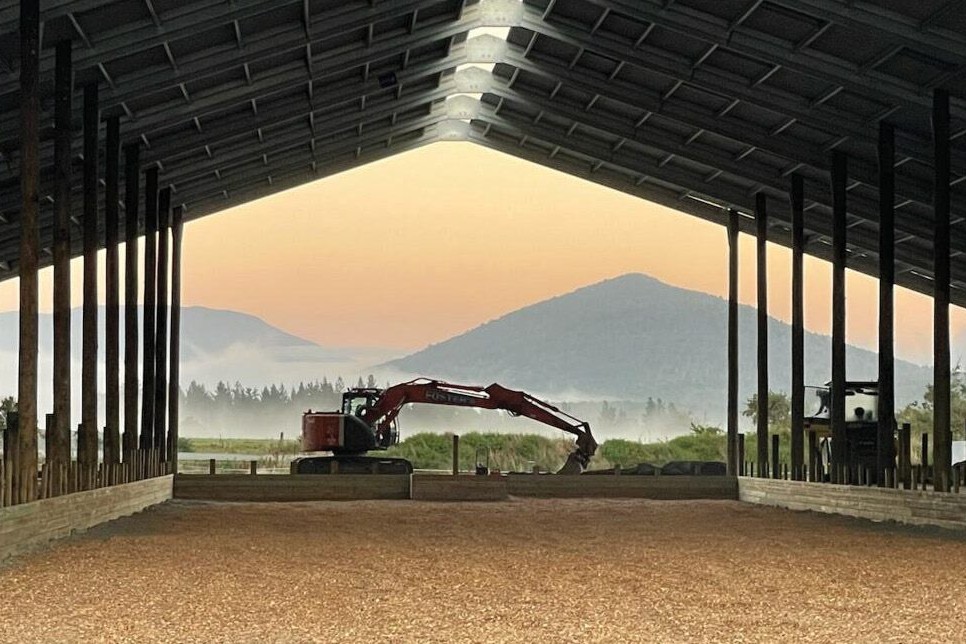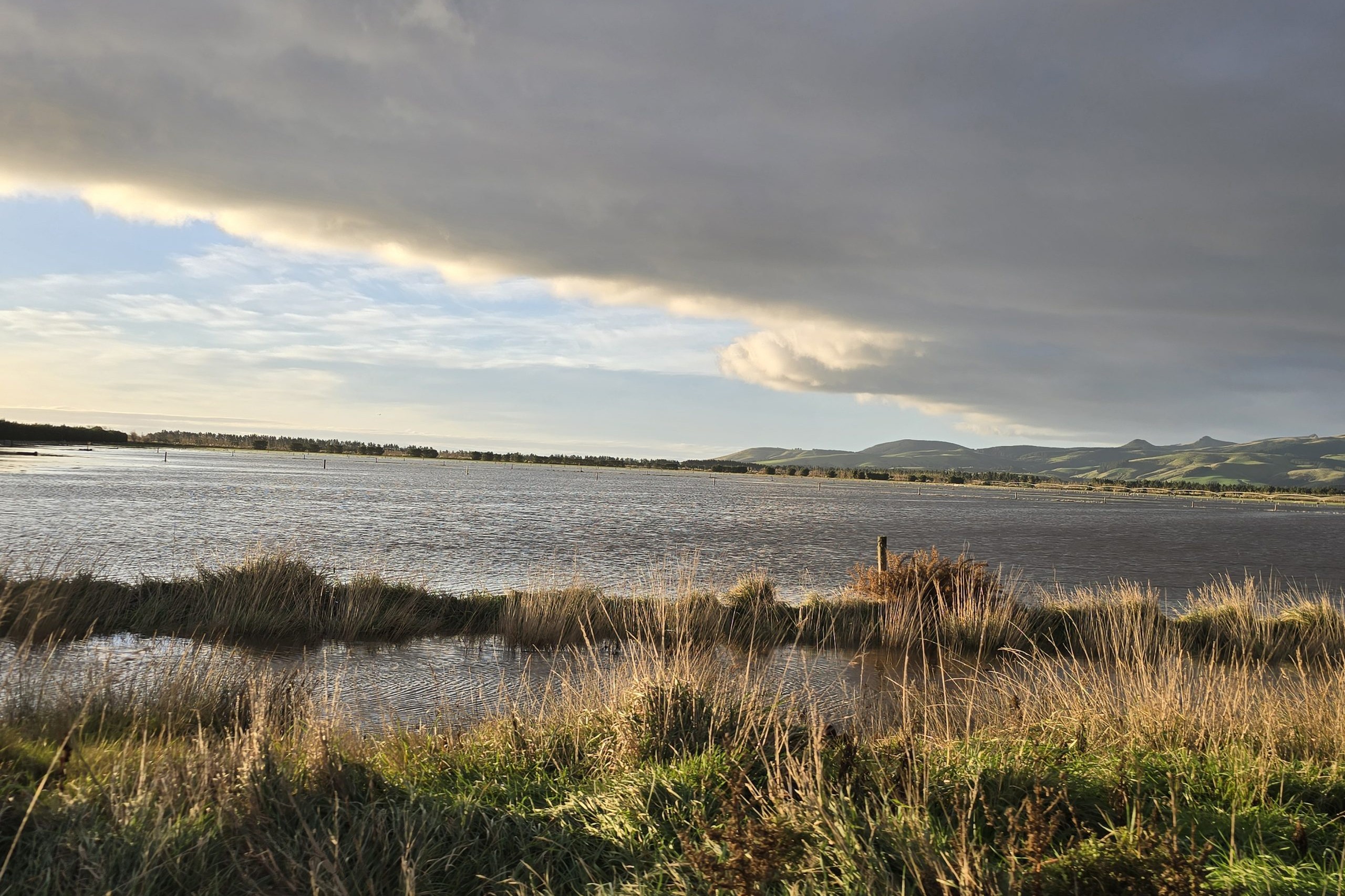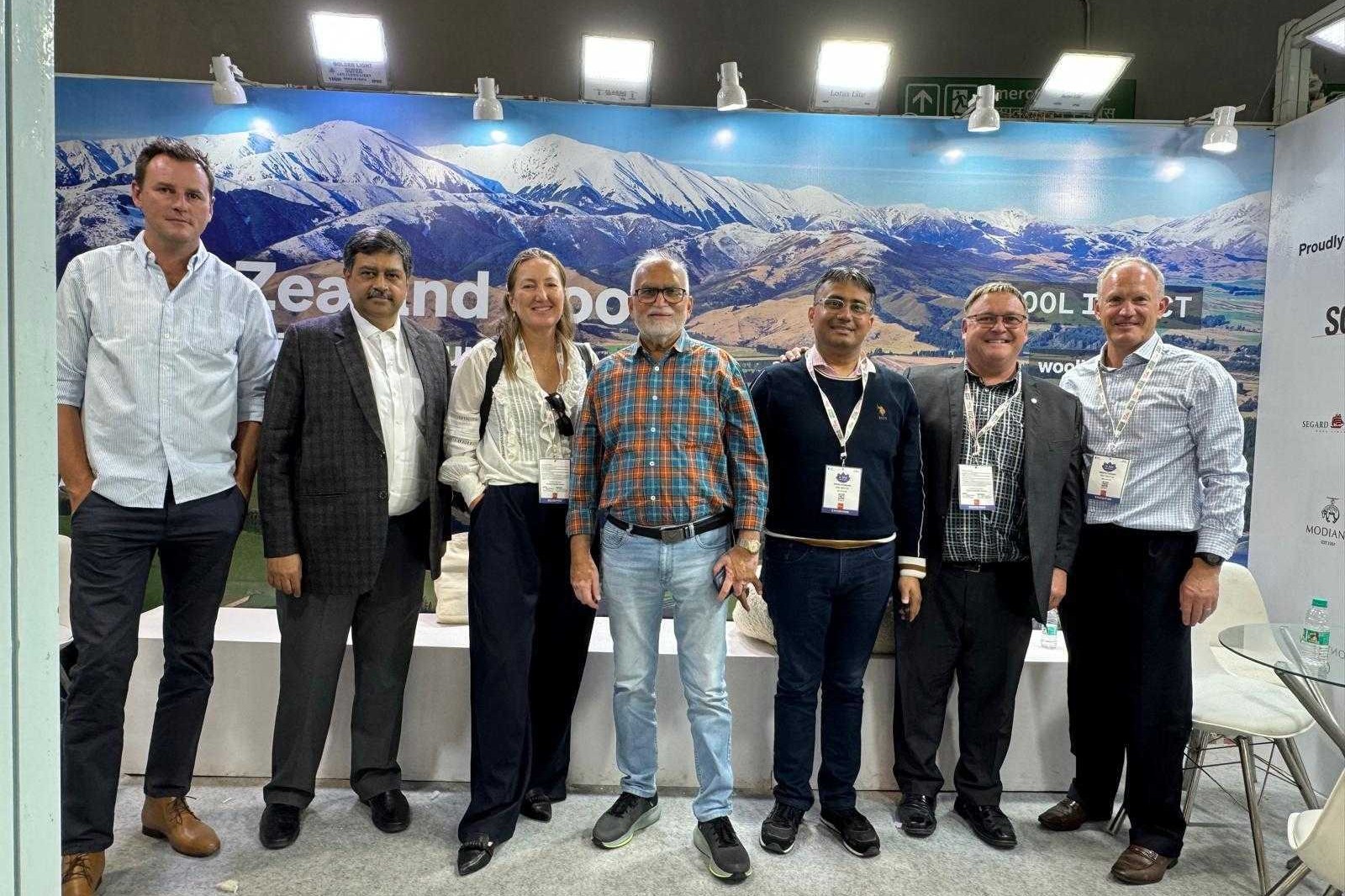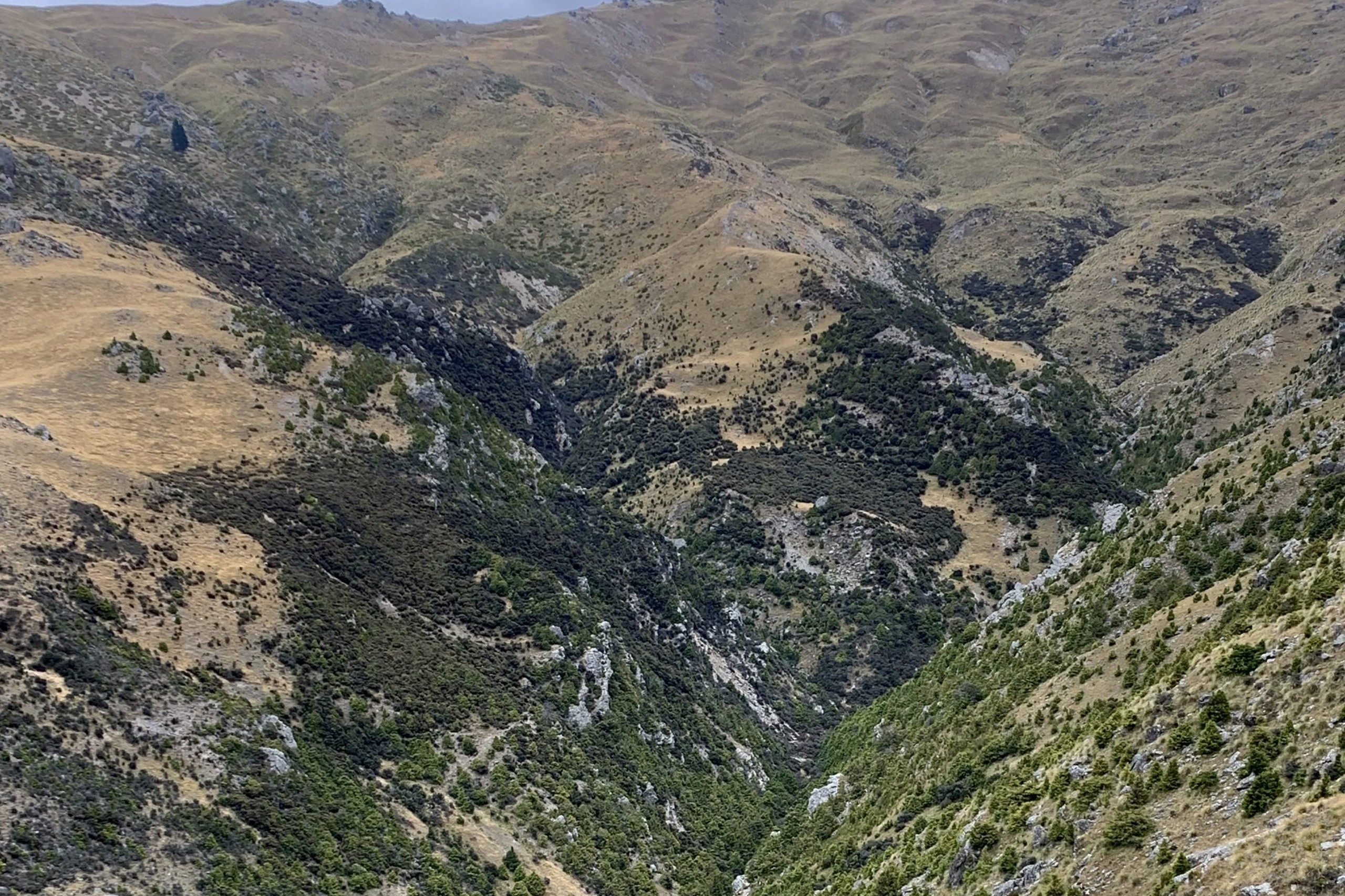We’ve put a roof on it
When you farm on the West Coast, water can be a problem. So the family has built a Mootel, Gaye Coates writes.

When you farm on the West Coast, water can be a problem. So the family has built a Mootel, Gaye Coates writes.
FAMILY FOLKLORE HAS MURRAY’S grandfather proclaiming that Haupiri would be the perfect place to farm if only a roof could be put over it.
No doubt this assertion was made during a downpour and with 3.3 metres of annual rainfall, there was plenty of opportunity for this statement to be made. Two generations later, we have this year somewhat achieved that vision of creating a perfect farming spot – quite literally, the roof is on.
Last year we embarked on a project. Our feed pad was not fit for purpose. It was one of those landmarks onfarm that we weren’t keen on promoting. It complied but we knew, not well.
Our problem again, was water; still too much of it, resulting in a compromised feed platform, exacerbated by 800 quartets of feet. We needed to keep the water off for the cows, the integrity of the farm and for us – it is hard work feeding out in mud. So, what started as a rather innocuous project, morphed with deliberation into a large-scale plan to build two composting shelters, dubbed affectionately in farming commentary as “Mootels”.
Why? Ultimately when we refined the issue, we wanted something that was going to respond broadly in the long-term to both weather and farming demands, regardless of season.
We wanted the solution to reflect our values of caring for our cows, our land and our people. We farm in a high rainfall area in the direct path of an easterly wind notorious for its damage. Farming in the basin of a valley can present extremes of both cold and heat.
We are bounded by a large river and have several creeks running through the property. The realities presented by this topography meant simple additions to the feed pad weren’t going to deliver us a future-proof solution and in no way did it address that perpetual issue of winter grazing. We needed a bigger roof over a more multi-purposeful space.
There were a number of cow housing options that could have achieved this; other farmers were generous in sharing honestly their experiences and opinions. Simply put, “Mootels” ticked our requirement boxes.
The cows would be able to feed, shelter, rest, walk around, calve and mate all under the one roof at any time of the year, if being out on the pasture was detrimental to them or to the land. Most importantly our emphasis could remain on feeding grass.
Ironically, as the roof went on, the rain stopped and the heat turned up. We were presented with hot and dry conditions not usual for our district. Summer growth rates plummeted and pasture quality disappeared, limiting milk production and challenging cow condition. Summer and early autumn became a frenzied juggle of managing feed demand and securing feed supply.
While only one of the two barns was completed, the responsiveness of the shed was instantly demonstrated. Every day from the end of October, the cows went into the barn for supplementary feed and to shelter from the intense heat. They wanted to go in there.
It was amazing to watch from a distance, the clouds of dust stirred up from the dry laneways as the cows determinedly, fast-paced their entry. There was no feed wasted. All that was left on the concrete feed lanes were a few stones and some unpalatable dock stems. Cows rested.
There is still a bit to learn about the composting process and maintaining the activity of this. There’s still a bit of fine tuning required to align the shelters with our farming system and practices. We’re learning and there is a whole community of cow barn farmers and professionals who can mentor this.
But, when we see cows content, well fed, in good condition, with clean udders and producing milk; a pasture rested and recovering; and a happy team of people, despite the disorder delivered by the weather outside, there is a sense of accomplishment; a feeling that we’ve made a contribution to securing the future of farming for NZ. (Thanks Richard Pierce, Southland farmer and motivator, for those words).




